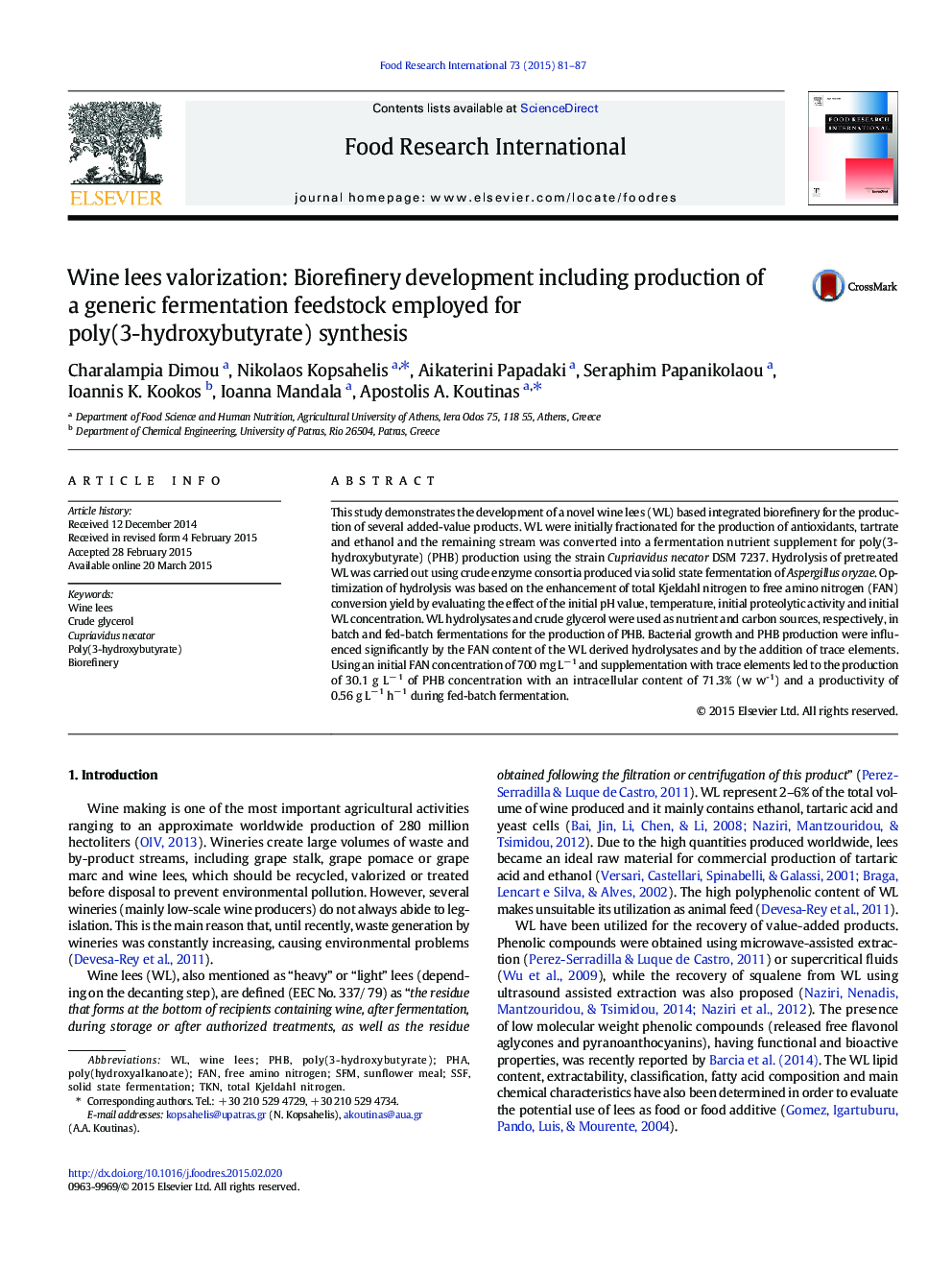| Article ID | Journal | Published Year | Pages | File Type |
|---|---|---|---|---|
| 6395433 | Food Research International | 2015 | 7 Pages |
This study demonstrates the development of a novel wine lees (WL) based integrated biorefinery for the production of several added-value products. WL were initially fractionated for the production of antioxidants, tartrate and ethanol and the remaining stream was converted into a fermentation nutrient supplement for poly(3-hydroxybutyrate) (PHB) production using the strain Cupriavidus necator DSM 7237. Hydrolysis of pretreated WL was carried out using crude enzyme consortia produced via solid state fermentation of Aspergillus oryzae. Optimization of hydrolysis was based on the enhancement of total Kjeldahl nitrogen to free amino nitrogen (FAN) conversion yield by evaluating the effect of the initial pH value, temperature, initial proteolytic activity and initial WL concentration. WL hydrolysates and crude glycerol were used as nutrient and carbon sources, respectively, in batch and fed-batch fermentations for the production of PHB. Bacterial growth and PHB production were influenced significantly by the FAN content of the WL derived hydrolysates and by the addition of trace elements. Using an initial FAN concentration of 700 mg Lâ 1 and supplementation with trace elements led to the production of 30.1 g Lâ 1 of PHB concentration with an intracellular content of 71.3% (w w-1) and a productivity of 0.56 g Lâ 1 hâ 1 during fed-batch fermentation.
